Baking doesn’t have to be complicated or challenging. Here is a simple baking conversion chart to help make sourdough baking more straightforward.
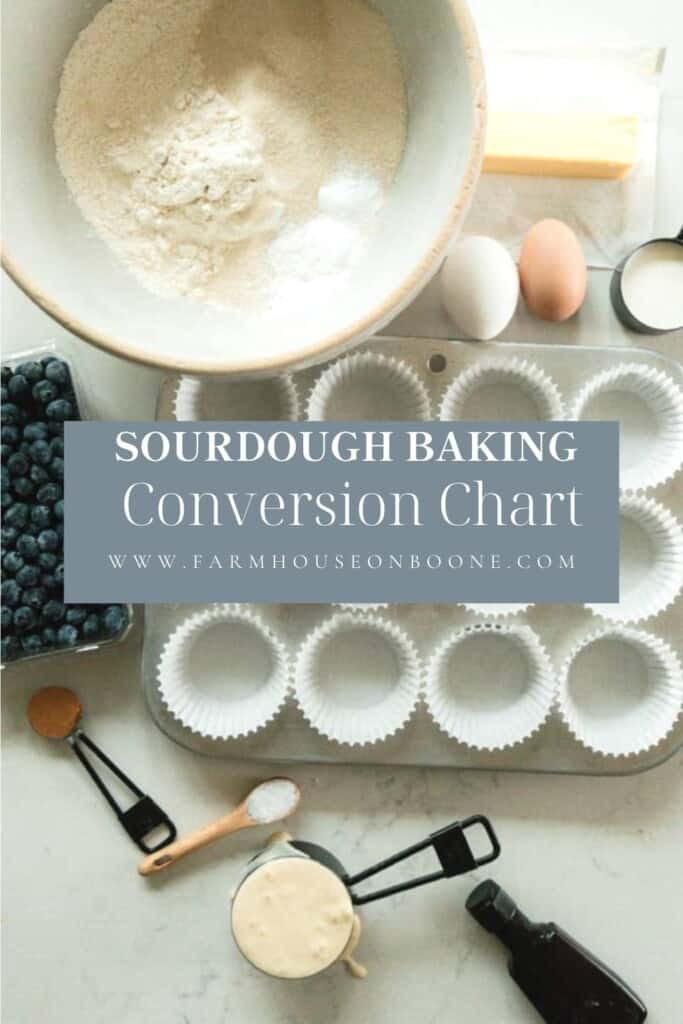
Table of Contents
I have a true love for sourdough, which is not really a surprise at this point. My love and knowledge for this type of baking has grown a lot over the years.
Recipes continue to change, and get better, all in order to get more fermented grains into others homes.
If you are new to sourdough, you can look through over a hundred recipes available on this site, and you can even learn how to transform your favorite recipes into sourdough ones.
While many people use cups to bake with, others use a scale, so I wanted a place to be able to share measurements for both ways to make it more exact and accommodating.
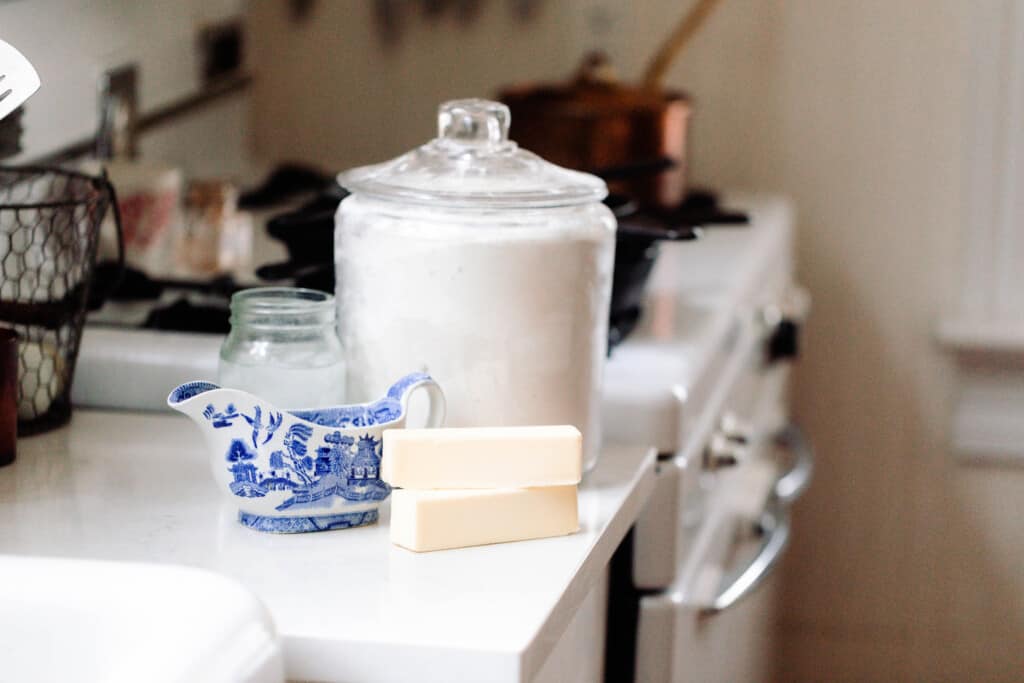
Measuring Flour
- I’m not a technical baker. The “appropriate” way to measure flour is to fluff it up, spoon it into a dry measuring cup and then use a knife of straight edge to level it off. That is just too much fuss for me. I’m more of a dunk my measuring cup into my large canister of flour and shaking it level kind of person.
- If you research flour weights and measurements, you will find slightly differing amounts. These measurements will work for any recipes on this website.
This post contains affiliate links, which means I make a small commission at no extra cost to you. See my full disclosure here.
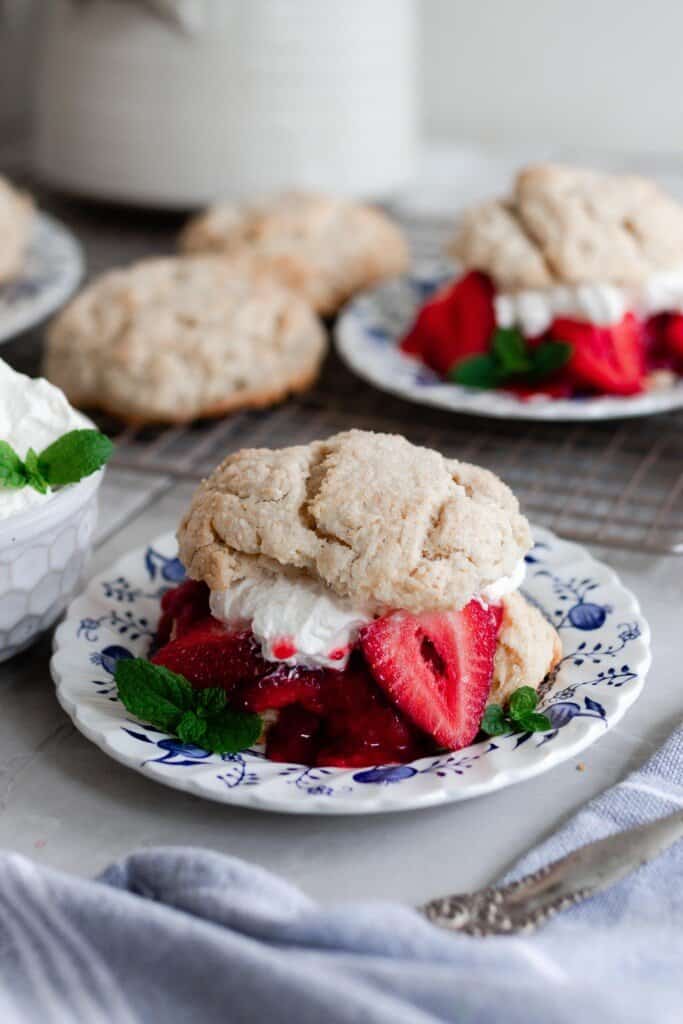
Benefits Of Using A Kitchen Scale:
- Many people love using a kitchen scale for baking because it can make baking much easier.
- More exact way of measuring.
- It becomes much easier when measuring small amounts of ingredients.
- Better and more consistent results.
- Measure everything in one bowl. You don’t need separate measuring cups, spoons, and liquid measuring cups.
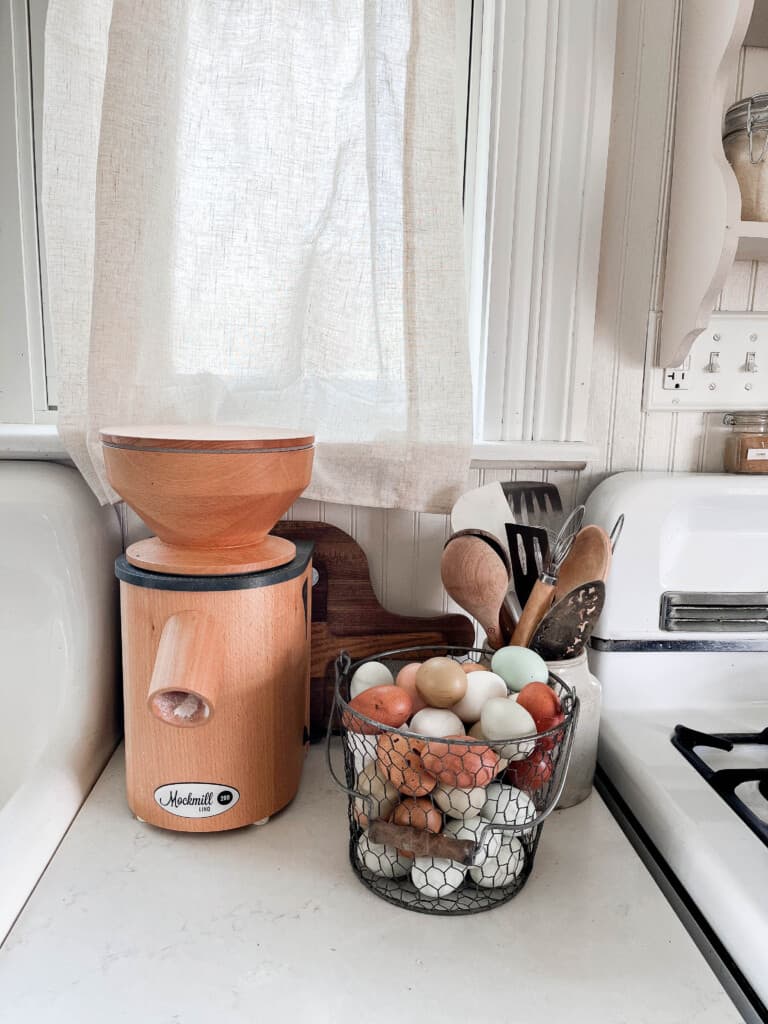
Helpful Baking Tools
Cast iron dutch oven (for artisan loaves and boules)
Baking dishes and cast iron skillets
Sourdough Baking Conversion Chart
Please note that this chart is for converting Farmhouse on Boone recipes, where the recipe is demonstrated in cup measurements. The reason this distinction has to be made is because there are different ways to measure a cup of flour that cause a wide variation in the ending weight.
When using the spoon and level method, one cup of flour ends up weighing 120 grams. Notice the discrepancy in my measurements, where one cup of flour weighs 140 grams. This is because of my no-fuss baking approach, which involves dunking the measuring cup straight into the flour and leveling it off of the top.
I repeated my “super scientific” method of dunking the cup into the flour, leveling it off and pouring it into a bowl, then times. On average I came up with 140 grams.
I had my recipe tester, who lives across the country, repeat this same process in her own home, and she also came up with 140 grams.
So, Though the internet mostly says one cup of all purpose flour weighs 120 grams, my recipes are tested with the one cup = 140 grams measurements. This also applies to bread flour, which generally weighs the same as all purpose flour.
I’m trying to save you some time in the kitchen, and who has time to fill a cup measurer with flour spoon by spoon? I can’t be the only baker who finds this unnecessarily tedious!
I noticed through lots of testing that 100% whole wheat flour actually weighs a bit more than all purpose. Also, milk weighs more than water.
You may notice in the chart, the significant weight difference between active starter and sourdough starter discard. This is because when a starter is bubbly, active and at its peak, it is light and fluffy. When the yeasts are past the active stage, the starter sinks down and becomes a bit more dense.
I know this all drives very precise bakers insane, but I can assure you that I have baked everything from bread to bagels, cookies and muffins, and everything in between at all different stages of starter activity, and it has all turned out just fine.
This is supposed to be fun and nourishing, my friends. Let’s not overcomplicate it too much!
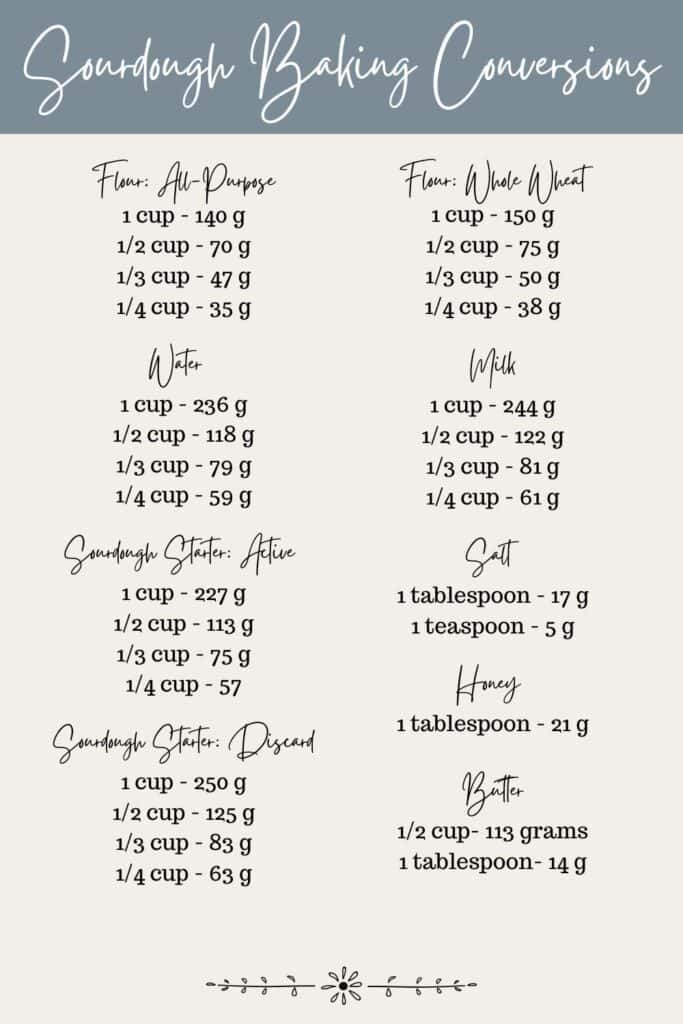
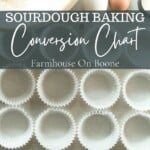
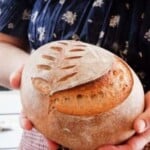
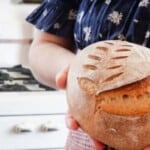
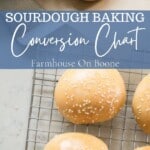

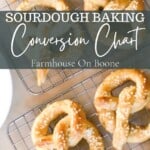










Hello. I am very new to sourdough and am only on day two making my starter. My question for you is, my husband has recently found out he’s borderline diabetic and needless to say we are having to change everything as far as our diet. I wondered your thoughts on what flour is best for him. I started my starter with King Arther flour.
Thanks I’m advance,
Katy
I’m not a medical professional, but lower glycemic flours are the better option. Many actually don’t have gluten. But if you ware wanting to stick with regular baking, then a whole wheat flour, spelt, einkorn are going to be a better option, and reducing the amount of all-purpose four used. Fermenting grains (making true sourdough bread) can also help lower the glycemic index making it a healthier option. Hope that helps.
Lisa, Thank you so much for the conversion chart.
You are welcome! Glad it was helpful! I know I use it a lot, too!
Hi Lisa, I have a question, I have a bread recipe that requieres 1 tbsp of instant dry yeast and 4 cups of Water, can I use the same recipe only with sourdough starter instead of yeast? If yes how much starter do i need for that recipe?
I would use 1/2 cup starter for that.
You are the bomb!!! Real. Practical. Things that are used everyday! I know another blogger who charges $19 for her sourdough recipes. I keep using your recipes!!
I made your whole wheat sourdough recipe and the bread doubled in size in the bread pans but didn’t really rise when baking. Is this normal? I’m new to sourdough baking. This was the first time I was trying your recipe.
I think 🤔 I figured it out! Oh my goodness how simple !
I enjoy your site . I have learned different how to make sourdough bread from you . Could you please explain your chart in detail for someone new to bread 🥖 making? Thank you . I ‘ am completely lost looking at it . 😧
Love your recipes. Wish you published a cookbook as I would love all your recipes.
This is a brilliant post, Lisa. You’ve become such an expert in sourdough! And your mission to get “more fermented food into others’ homes” is a great one! Thank you.
This is one of the most practical, useful posts I’ve ever found. Thank you, from a very amateur baker!